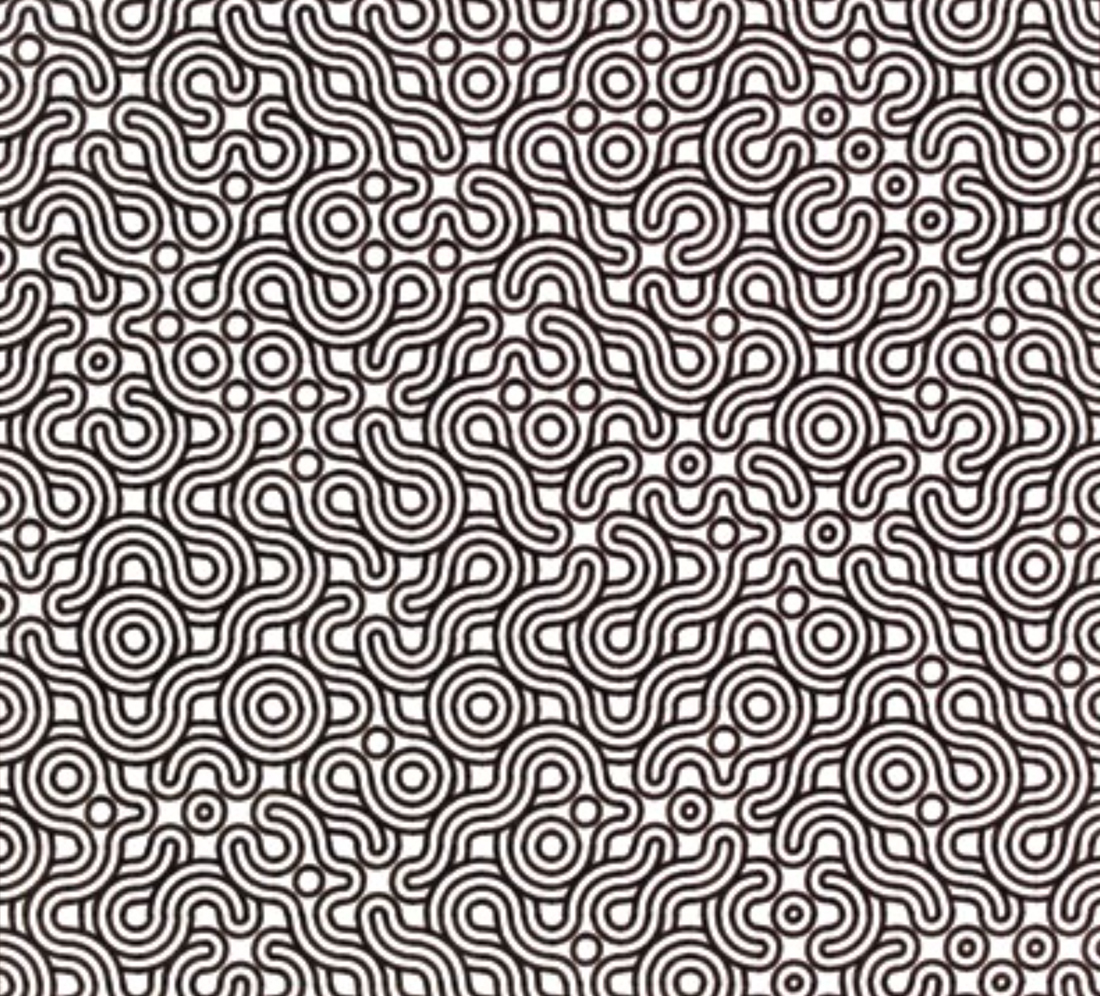
Untitled, Computer Assisted Drawing
I discovered computers as an art medium when I saw Cybernetic Serendipity at the ICA in 1968. I was immediately attracted but it wasn’t until 1974 that I was able to start using computer systems as a central part of my practice. After a period learning programming I began to produce works and Untitled, Computer Assisted Drawing is one of my earliest computational artworks and was made in 1975. It was produced by a FORTRAN programme run from punch cards on an ICL 1903A Mainframe Computer at Liverpool Polytechnic (now John Moore’s University). The programme produced a paper tape that controlled an offline Calcomp pen plotter. The entire process from conception to production of a drawing took around 2 weeks depending on the number of errors in the original programme. At that time there were no ‘apps’ and very little support software so I had to write all the necessary code (including things like device drivers) myself.
My early works like this used random numbers to distribute and orientate a set of square tiles. I also increasingly adopted
an early artificial life technique called Cellular Automata that I had discovered in a Scientific American article in 1969. A-life methodologies like this have become a central part of my practice and I am now recognised as a pioneer of this kind of work.
Early influences included the work of Kenneth and Mary Martin, the members of the UK’s System’s Group, the pan-European systems art movement and US conceptualists like Sol Lewitt and Dan Flavin. They showed me that art could be a process, or system, and that art production could be a ‘hand’s off’ process. In the decades since I have become interested in the concept of ‘art that makes itself’ and the potential of artificial intelligences that can produce art autonomously without the need for human input or intervention.
In 1976 I began to use stand-alone minicomputers (like the DEC PDP8 and DG Nova 2) to produced time-based works that are computed dynamically and are shown on screens. The first of these – Builder/Eater, 1977 – used a 96 by 96 pixel monochrome frame store displayed on a 9in CRT monitor. A recreation of this work was included in the Digital Archaeology section of the Digital Revolution Show at the Barbican earlier this year and is now on international tour.
Early in my career I had to carry around boxes of punched cards and then 10-inch tapes. Then there were boxes of floppy disks. Now almost everything I have ever done fits easily on a high-capacity USB stick and, of course, is in the Cloud. My early works used to take weeks and sometimes months of work on expensive and hard to access computers using difficult programming languages like Assembler. Now tools like Processing and systems like the Raspberry Pi make it so much easier and cheaper to get involved.


